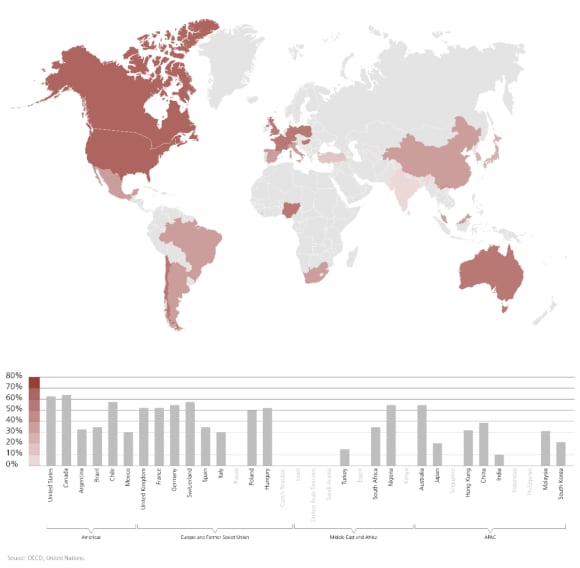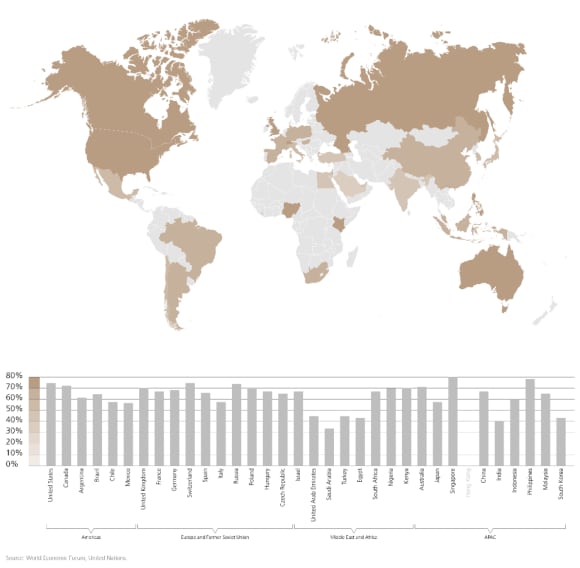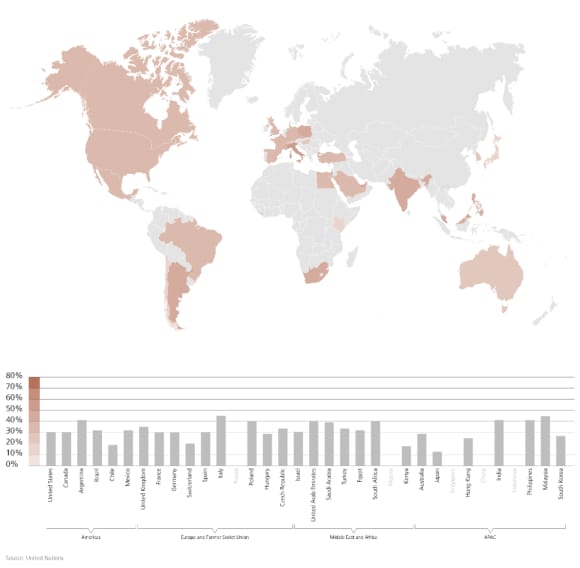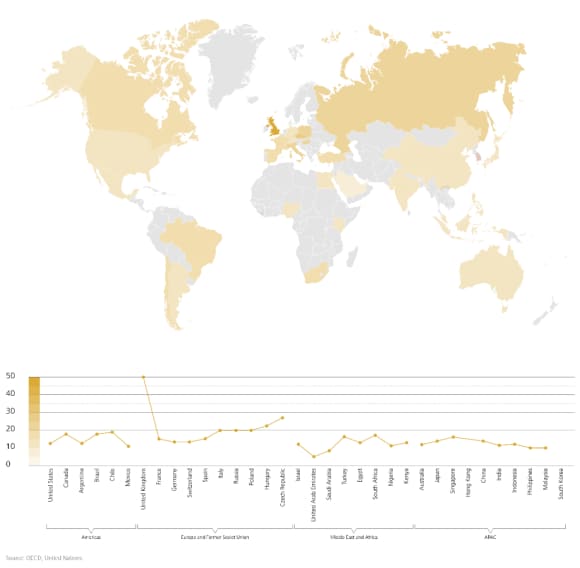What is gender-lens wealth and why should we care?
Find out more about gender-lens wealth, how to invest whilst making a social impact and what we have been doing to achieve gender equality.
What is Gender-Lens Wealth?
What is Gender-Lens Wealth?
Achieving gender equality and female empowerment is the fifth of the United Nations' 17 Sustainable Development Goals (SDGs) for 2030. Yet, according to a recent World Economic Forum report, basic global gender gaps could take 83 years to close. One key driver of change could be gender-lens wealth - mobilizing private wealth towards gender equality worldwide.
According to WEF, women experience only 59% of the economic opportunities and participation rates that their male counterparts enjoy globally. Women’s legal protections are also still underdeveloped, with women in some countries having little access to land, financial services or inheritance. Despite this, SDG 5-related causes have received very little funding so far. For instance, related causes received only 2.6% of donations towards all SDG-related causes between 2000-2013, according to AidData. Within private wealth, one driver may be that only 2% of wealth managers treat and service women as a distinct group with specific interests, according to analysis by UBS Unique and BCG.
CIO's new white paper shows that SDG 5 could benefit greatly from systematic, coordinated private support, especially in the fields of policy, business, education, and networking as well as gender-lens investing and philanthropy.

Three keys to gender equality
Three keys to gender equality
Maternity provisions, domestic burden-sharing, STEM education
When tackling SDG 5, this report recommends that wealthy individuals focus particularly on three key areas which have almost universal relevance for women’s professional and personal lives: improving maternity provisions, relieving the burden of unpaid domestic work, and increasing participation in science, technology, engineering, and math (STEM) education. Women globally still spend an average of 4.5 hours a day on unpaid care work versus 2.2 hours for men, while STEM qualifications, which are associated with higher-paying employment, are received by 30% of male graduates versus 16% of female peers.
All five main aspects of gender-lens wealth - policy, business, investing, giving, and education - can play a role in these three core areas. Private individuals can conduct policy and education campaigns on provisions for maternity leave, affordable childcare, and female STEM studies, as well as provide philanthropic subsidies. They can also try to ensure their own organizations or businesses meet acceptable standards in these areas.
With respect to their investments, individuals can tilt their listed equity portfolios towards companies which have a greater proportion of senior female managers. A greater proportion of female executives and directors has generally been found to correlate with higher returns. While women in leadership may not necessarily be the direct cause of outperformance, gender balance may be a reliable proxy indicator for better-performing companies.
Within the field of impact investing, which aims to generate an additive measurable social impact as well as a compelling return, opportunities in affordable childcare and STEM education exist, although they will probably be insufficient to warrant a broad range of successful dedicated funds. In many cases, investors, primarily ultra high net worth individuals with the ability to do their own solo or club deals, will likely have to pursue such avenues independently.
Female leadership
Policy and education (i.e. awareness) campaigns and associated donations are essential to increasing the number of women in leadership roles. Women's participation in politics and decision making is still low in most countries around the world. According to the UN Women report 2015, women are usually excluded from high rank positions in the government. Globally, the share of women among government ministers is close to 18% and they are usually assigned to social issues. The implementation of quotas in countries like Germany has helped to improve women's political empowerment but the participation remains low at levels close to 30%.
In the private sector, individuals can promote female leadership through mentoring and by increasing the number of female leaders in their own businesses and organizations.
Economic equality
Leadership inequality is not only reflected in the political arena but also on a more day-to-day economic level. In many countries, women still face discrimination when trying to access financial services and ownership rights. On the policy and education/awareness sides, promoting legal aid, in particular in low income countries, with respect to land rights and social protection benefits will help to reduce the disparities.
On the giving, business, and investing sides, subsidizing or offering loans and financial services promotes economic independence and empowerment. The Grameen Bank in Bangladesh offers long-term loans to buy housing and land if these are registered in women's names, providing security and ownership inside the household. However, on the investing side these are typically direct, case-by-case opportunities that are unlikely to form a sufficiently reliable stream for a broad range of successful dedicated funds or similar instruments.

The importance of gender-lens networks
The importance of gender-lens networks
As per UBS’s white paper for WEF 2017, networks and communities remain crucial in coordinating and leveraging responses to all the UN SDGs, bringing together private wealth and other inputs. Within investing and philanthropy, current examples include a proposed WEF Young Global Leader initiative called Align17, an SDG-focused platform that has received expressions of interest from the Gates Foundation, PwC, the SDG Philanthropy Platform, and other potential stakeholders.
Given this area’s importance, private individuals should seize on opportunities to establish SDG 5-related networks that can connect gender-lens wealth with policy, education, and business as well as philanthropy and investing opportunities. Networked organizations such as the Womensphere Foundation and iamtheCODE aim to connect women and girls with professional developmental opportunities. Such organizations are also increasingly linking up with one another via initiatives such as UBS’s Global Visionaries community.
In addition to connecting gender-lens wealth and other resources with relevant opportunities, networks also help collect, pool, and publish SDG 5-related data. As per the missing data points in the regional section of this report, relevant information is not always available and may also be underreported, especially in the case of highly sensitive areas like gender-based discrimination and abuse. Networks can help standardize corporate, investment, and even government disclosures relating to SDG 5, which helps gender-lens wealth identify gaps and mobilize more resources towards relevant SDG targets.
In conclusion, there are many avenues for gender-lens wealth to work towards gender equality and female empowerment. However, if private individuals act alone rather than connecting and leveraging others’ work, gender-lens wealth will not have the scale that is necessary to meet the goal’s 2030 deadline. By espousing SDG 17 - partnership for the goals - via networking and collaboration, gender-lens wealth can take a much greater step towards meeting SDG 5 and explore options for furthering its agenda until 2030 and beyond.


Gender-Lens Wealth
UBS CIO WM white paper




